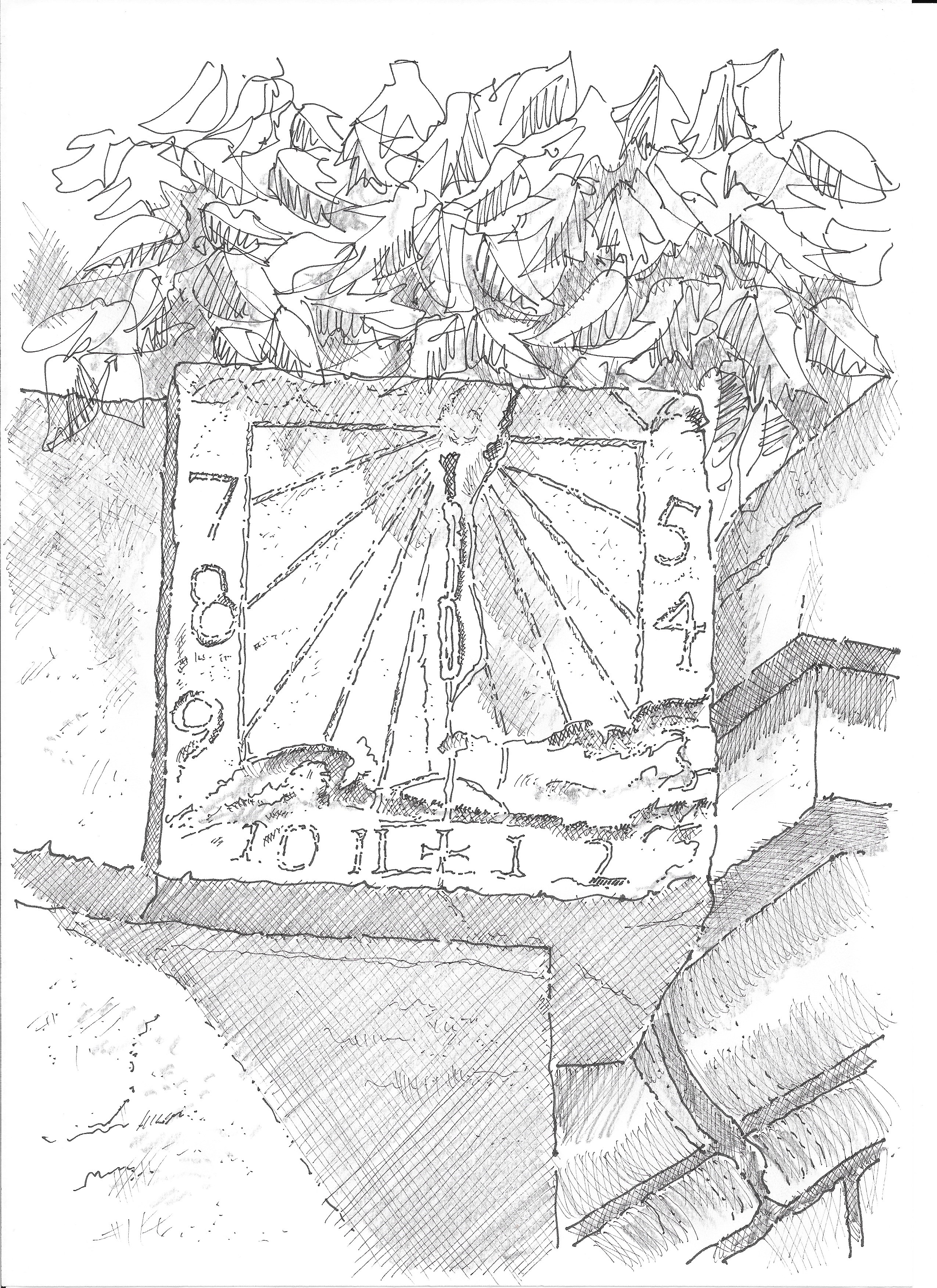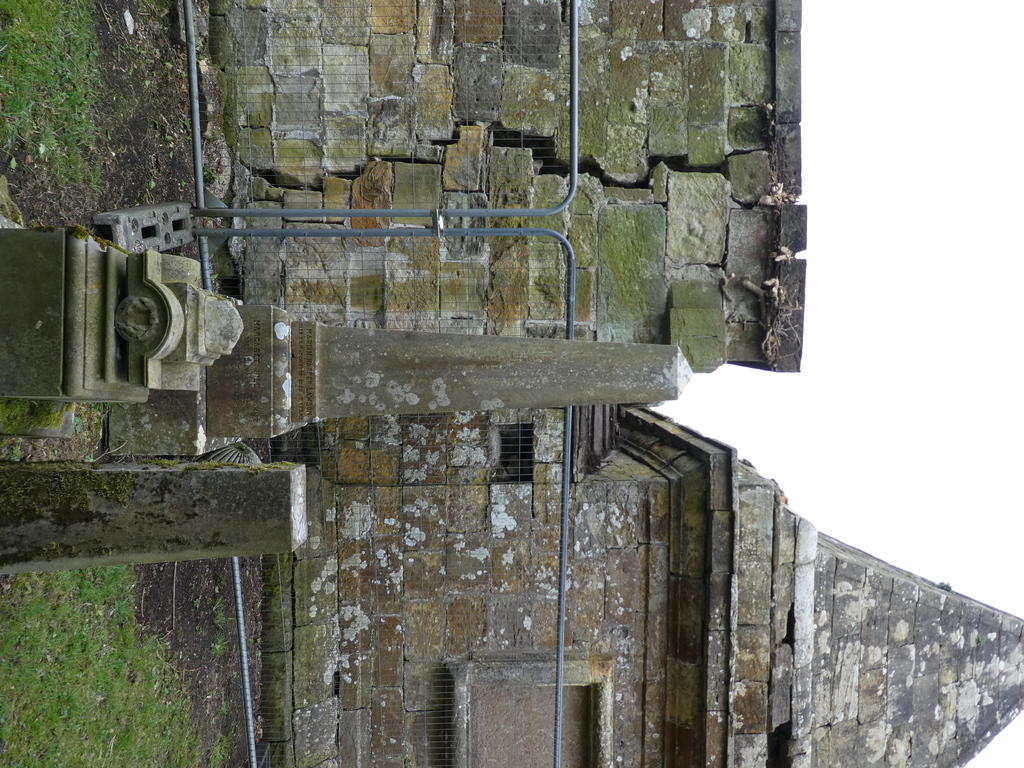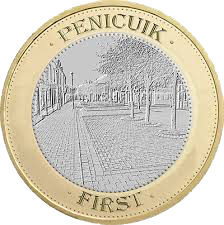Ancient sundial exposed
1st September 2022
1st September 2022

Sundial on the old kirk
The sundial was hidden until recently by the ivy which covered the Clerk
Mausoleum and the east end of the old kirk containing the Clerk burying
ground. The Clerk Mausoleum dates from 1683-84 whilst the the old kirk
is believed to be medieval. Both of these structures are scheduled
ancient monuments.
The sundial is made of a block of stone which is mounted at an angle on
the south-east corner of the old kirk. It has two vertical sides or
faces, one facing south and the other east. The remains of the gnomons
can be seen on both faces of the sundial which is carved with arabic
numerals. The markings, although worn, can still be distinguished on
the south facing dial. Vertical sundials are not unusual on
ecclesiastical buildings.
In the 17th and 18th centuries there was a growing interest in
mathematics and science – sundials were of interest as astronomical
instruments. A sundial, which only works when the sun is shining, has to
be aligned to the sun and correctly positioned. There is a similar
vertical two face sundial at Glencorse Old Kirk although this is
positioned on the south-west corner. Although no references have been
found giving information about the Penicuik Kirk sundial it seems likely
that it is contemporary with the belfry tower.






